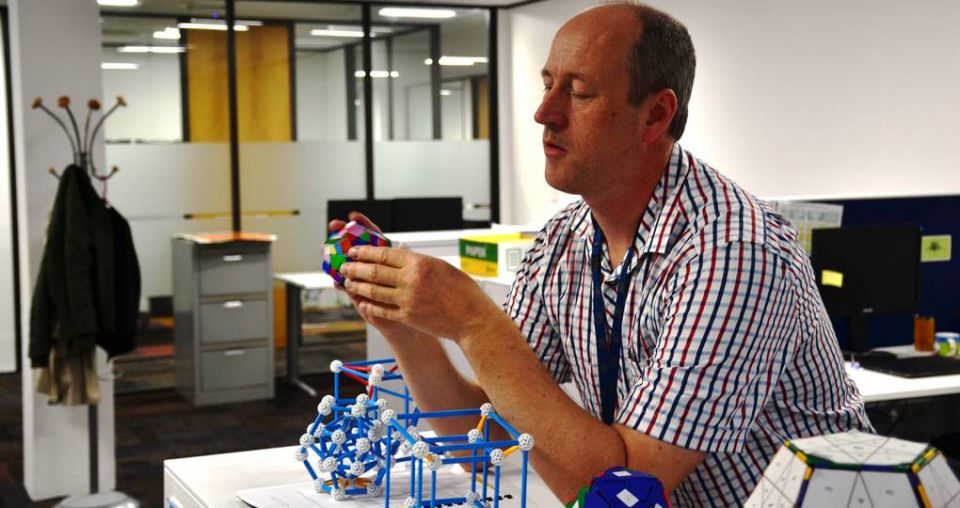Maths unravels multi-coloured mind bender
• May 18, 2016

Dr Robin Hankin with his collection of cubes and puzzles. Photo: Amelia Petrovich
Most people never master the humble Rubik’s Cube, but one mathematician may have solved its more difficult counterpart with record-breaking precision.
Senior lecturer of mathematic sciences at AUT, Dr Robin Hankin, says he has created an algorithm and corresponding academic paper outlining how to perform a Megaminx ‘superflip’ move with the least possible movements.
The Megaminx is a dodecahedron-shaped puzzle with 50 movable coloured pieces compared to the traditional Rubik’s Cube’s 20 pieces.
Dr Hankin said the ‘superflip’ is “in a well-defined sense, the hardest pattern that there is,” requiring puzzlers to flip over all 30 of the Megaminx’s edges.
The algorithm acts as a guide to performing the superflip in 82 moves, one move less than the current record of 83, Dr Hankin said.
For Dr Hankin, a mathematical equation was the logical first step in solving the physical puzzle.
“When I’m messing around with the mathematics I can’t just say ‘the pink one that goes next to the blue one’, I need some kind of way of numbering so I can do it mathematically,” Dr Hankin said.
“It’s one thing to pick it up and manipulate it but as soon as you start working with mathematics you need numbers.”
Dr Hankin said he used a cluster of approximately 100 computers to do a “systematic sweep” of possible algorithms daily, with the final result taking a year to complete.
“It’s like you’re looking for a gold nugget [and you think you’ll find it] but every stupid day is a failure,” said Dr Hankin.
“When I found it I couldn’t believe it, I just couldn’t believe it.”
Dr Hankin said he is interested in submitting his result to Guinness World Records, but that as it was part of an academic paper, he aims to follow protocol before any official declaration.
“What I want to do inside myself is just tell everyone, but the way it works [professionally] is that . . . in academia you write your stuff off, but it doesn’t mean jack until it gets reviewed,” said Dr Hankin.
Head of engineering, computer and mathematical sciences school at AUT, Professor Enrico Haemmerle, said that he is “delighted” the algorithm has come to fruition.
Professor Haemmerle said AUT’s research covers a wide spectrum of mathematics, and that discoveries like Professor Hankin’s shine a positive light on the field as a whole.
“I know that he has worked hard . . . and his results show that mathematics can be exciting and stimulating,” said Professor Haemmerle.
Watch Dr Hankin illustrate how his algorithm works. Video: Amelia Petrovich